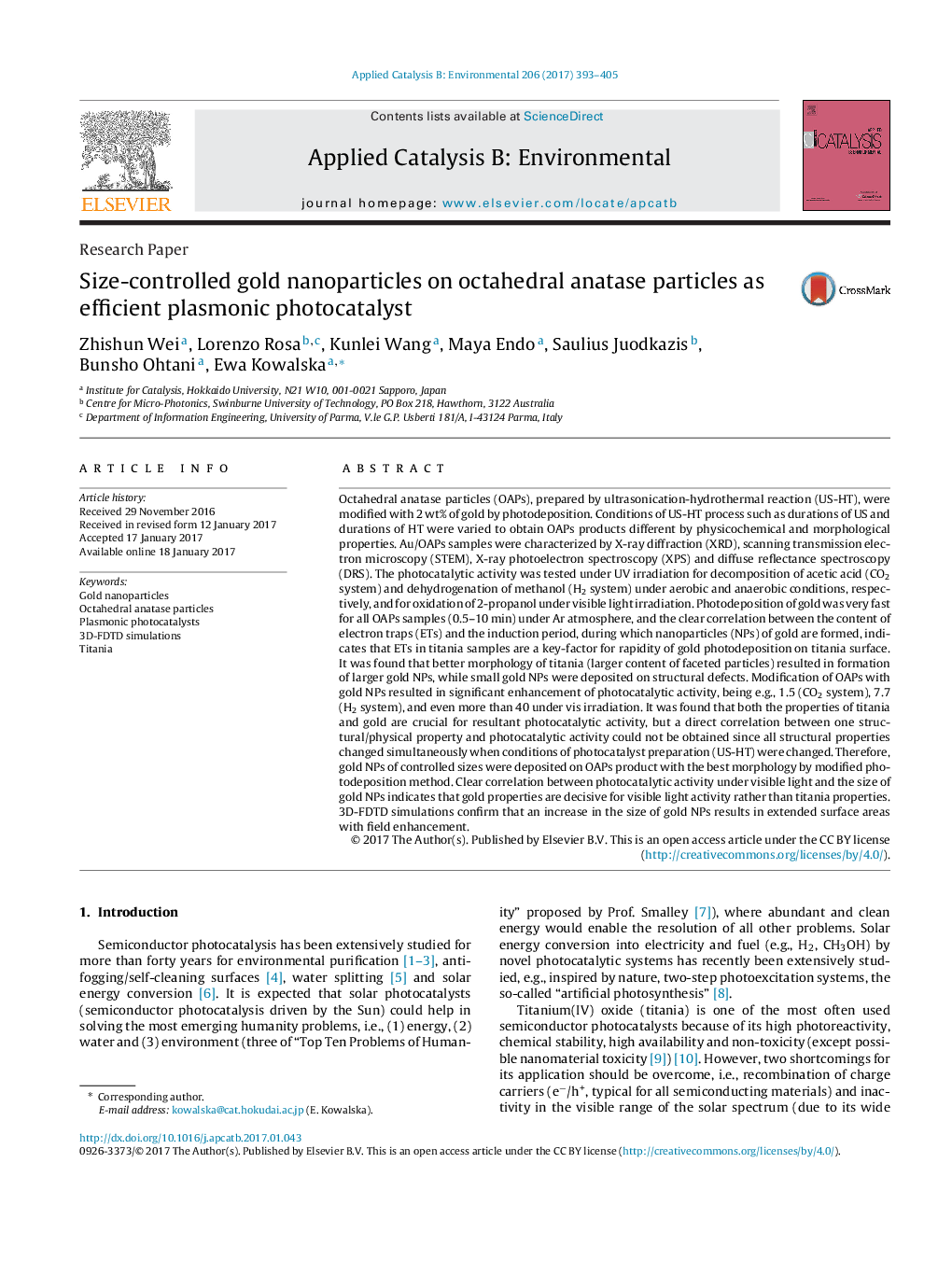| کد مقاله | کد نشریه | سال انتشار | مقاله انگلیسی | نسخه تمام متن |
|---|---|---|---|---|
| 6454711 | 1418814 | 2017 | 13 صفحه PDF | دانلود رایگان |
- Gold-modified octahedral anatase particles (Au/OAPs) with enhanced photocatalytic activity.
- Structural/lattice defects as nucleation sites for gold NPs.
- Size-controllable gold NPs by photodeposition method in the presence of various hole and electron scavengers.
- Enhanced vis-photocatalytic activity with an increase in gold NPs' size.
- Strong enhancement of plasmon resonance for larger gold NPs by 3D-FDTD simulations.
Octahedral anatase particles (OAPs), prepared by ultrasonication-hydrothermal reaction (US-HT), were modified with 2Â wt% of gold by photodeposition. Conditions of US-HT process such as durations of US and durations of HT were varied to obtain OAPs products different by physicochemical and morphological properties. Au/OAPs samples were characterized by X-ray diffraction (XRD), scanning transmission electron microscopy (STEM), X-ray photoelectron spectroscopy (XPS) and diffuse reflectance spectroscopy (DRS). The photocatalytic activity was tested under UV irradiation for decomposition of acetic acid (CO2 system) and dehydrogenation of methanol (H2 system) under aerobic and anaerobic conditions, respectively, and for oxidation of 2-propanol under visible light irradiation. Photodeposition of gold was very fast for all OAPs samples (0.5-10Â min) under Ar atmosphere, and the clear correlation between the content of electron traps (ETs) and the induction period, during which nanoparticles (NPs) of gold are formed, indicates that ETs in titania samples are a key-factor for rapidity of gold photodeposition on titania surface. It was found that better morphology of titania (larger content of faceted particles) resulted in formation of larger gold NPs, while small gold NPs were deposited on structural defects. Modification of OAPs with gold NPs resulted in significant enhancement of photocatalytic activity, being e.g., 1.5 (CO2 system), 7.7 (H2 system), and even more than 40 under vis irradiation. It was found that both the properties of titania and gold are crucial for resultant photocatalytic activity, but a direct correlation between one structural/physical property and photocatalytic activity could not be obtained since all structural properties changed simultaneously when conditions of photocatalyst preparation (US-HT) were changed. Therefore, gold NPs of controlled sizes were deposited on OAPs product with the best morphology by modified photodeposition method. Clear correlation between photocatalytic activity under visible light and the size of gold NPs indicates that gold properties are decisive for visible light activity rather than titania properties. 3D-FDTD simulations confirm that an increase in the size of gold NPs results in extended surface areas with field enhancement.
109
Journal: Applied Catalysis B: Environmental - Volume 206, 5 June 2017, Pages 393-405
